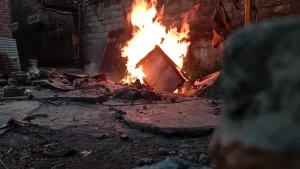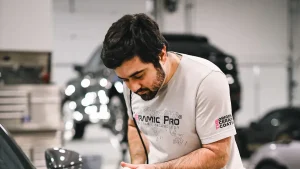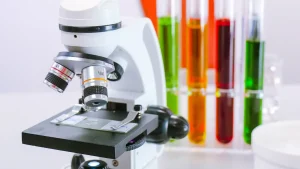When it comes to high-performance applications, you need a coating that can handle the heat—literally. CVD TaC coating stands out with its unmatched temperature resistance, hardness, and chemical stability. It’s built for the toughest environments. For less extreme needs, though, other coatings might offer a better fit.
CVD TACコーティングの概要

CVD TaCコーティングとは?
CVD TaCのコーティング, or chemically vapor-deposited tantalum carbide, is a high-performance protective layer. It’s created through a process called chemical vapor deposition (CVD). In this method, tantalum and carbon gases react at high temperatures, forming a thin, durable coating on the surface of a material. This process ensures the coating bonds tightly, making it incredibly strong and reliable.
You’ll often find CVD TaC coatings in industries where extreme conditions are the norm. Think aerospace, nuclear, or even advanced manufacturing. These coatings are designed to protect components from wear, corrosion, and intense heat. If you’re dealing with demanding environments, this coating is a game-changer.
Key Properties of CVD TaC Coating
What makes CVD TaC coating so special? First, it can handle extreme temperatures—up to 4000°F (2200°C). That’s hotter than most materials can withstand. Its hardness is another standout feature. It resists scratches and wear, even under heavy use.
Chemical stability is another big win. This coating doesn’t react easily with acids, alkalis, or other harsh chemicals. It’s like a shield for your equipment. Plus, it has excellent thermal conductivity, which helps manage heat in high-temperature applications. If you need a coating that’s tough, durable, and reliable, CVD TaCのコーティング checks all the boxes.
Comparison with Other Protective Coatings

CVD TaC Coating vs. PVD Coatings
You might wonder how CVD TaC coating stacks up against PVD (Physical Vapor Deposition) coatings. PVD coatings are popular for their smooth finish and ability to enhance surface aesthetics. They’re often used in decorative applications or for tools that don’t face extreme conditions. However, when it comes to durability and heat resistance, CVD TaC coating takes the lead. It can handle much higher temperatures and offers superior hardness. If your application involves intense heat or wear, CVD TaC coating is the better choice.
PVD coatings are easier to apply and cost less. But they don’t provide the same level of chemical stability. In harsh environments, PVD coatings may degrade faster. So, if you need long-term performance in tough conditions, CVD TaC coating wins this round.
CVD TaC Coating vs. Ceramic Coatings
Ceramic coatings are another strong contender. They’re lightweight and excellent at resisting heat. You’ll often see them in automotive or aerospace applications. But here’s the catch: ceramic coatings can be brittle. They may crack under heavy mechanical stress. CVD TaC coating, on the other hand, combines heat resistance with toughness. It’s less likely to fail under pressure.
Ceramic coatings are also less chemically stable than CVD TaC coating. If your equipment faces corrosive chemicals, CVD TaC coating offers better protection. While ceramics are great for specific uses, they can’t match the all-around performance of CVD TaC coating.
CVD TaC Coating vs. Metallic Coatings
Metallic coatings, like chrome or nickel, are widely used for their affordability and ease of application. They provide decent protection against wear and corrosion. But when the going gets tough—think extreme heat or aggressive chemicals—they fall short. CVD TaC coating outperforms metallic coatings in these demanding scenarios.
Metallic coatings also wear down faster in abrasive environments. If you need a coating that lasts longer and performs better under stress, CVD TaC coating is the way to go. While metallic coatings work well for less demanding tasks, they can’t compete with the high-performance capabilities of CVD TaC coating.
Application-Specific Analysis
High-Temperature Environments
When it comes to extreme heat, you need a coating that won’t let you down. CVD TaCのコーティング is built for these conditions. It can handle temperatures as high as 4000°F (2200°C). That’s hotter than most materials can survive. If you work in industries like aerospace or power generation, this coating is a lifesaver. It protects your equipment from thermal damage and keeps it running longer.
Other coatings, like ceramics, can resist heat too. But they often crack under mechanical stress. Metallic coatings? They melt or degrade at much lower temperatures. CVD TaC coating gives you the best of both worlds—heat resistance and durability. It’s the go-to choice for high-temperature environments.
Corrosive Environments
Corrosive chemicals can destroy equipment fast. If your work involves acids, alkalis, or other harsh substances, you need a coating that can stand up to the challenge. CVD TaC coating offers excellent chemical stability. It acts like a shield, protecting your tools and machinery from corrosion.
Ceramic and metallic coatings don’t perform as well here. They break down faster when exposed to aggressive chemicals. With CVD TaC coating, you get long-lasting protection. It’s perfect for industries like chemical processing or pharmaceuticals.
Wear-Intensive Applications
In wear-heavy environments, equipment takes a beating. Abrasion, friction, and impact can wear down surfaces quickly. CVD TaC coating excels in these situations. Its hardness resists scratches and wear, even under constant use.
Metallic coatings wear out faster in abrasive conditions. Ceramic coatings can crack under pressure. CVD TaC coating stays strong, making it ideal for manufacturing, mining, or any application where durability matters most.
Cost and Practical Considerations
Cost Comparison
When it comes to cost, CVD TaC coatings sit on the higher end of the spectrum. The advanced chemical vapor deposition process and the premium materials used, like tantalum carbide, make it a pricier option. If you’re working with a tight budget, this might feel like a drawback. But think about the 長期的な利点. CVD TaC coatings last longer and perform better in extreme conditions. That means fewer replacements and less downtime for your equipment. Over time, the investment can pay off.
Other coatings, like metallic or PVD coatings, are more affordable upfront. They’re great for less demanding applications. However, they wear out faster, especially in harsh environments. Ceramic coatings fall somewhere in the middle. They’re not as expensive as CVD TaC but still cost more than metallic options. If your application demands top-notch performance, the higher cost of CVD TaC coating is worth it.
Ease of Application and Maintenance
Applying CVD TaC coatings isn’t as simple as spraying on paint. The chemical vapor deposition process requires specialized equipment and expertise. This makes it less convenient compared to metallic or PVD coatings, which are easier to apply. But here’s the upside: once applied, CVD TaC coatings need very little maintenance. Their durability and resistance to wear mean you won’t have to worry about frequent repairs or replacements.
Metallic coatings are easier to apply but require more upkeep. They wear down faster, especially in abrasive or corrosive environments. Ceramic coatings are durable but can crack, leading to maintenance headaches. If you want a low-maintenance solution that lasts, CVD TaC coating is a smart choice. It saves you time and effort in the long run.
製品の詳細については、下記までお問い合わせください。 steven@china-vet.com またはウェブサイト: www.vet-china.com.







